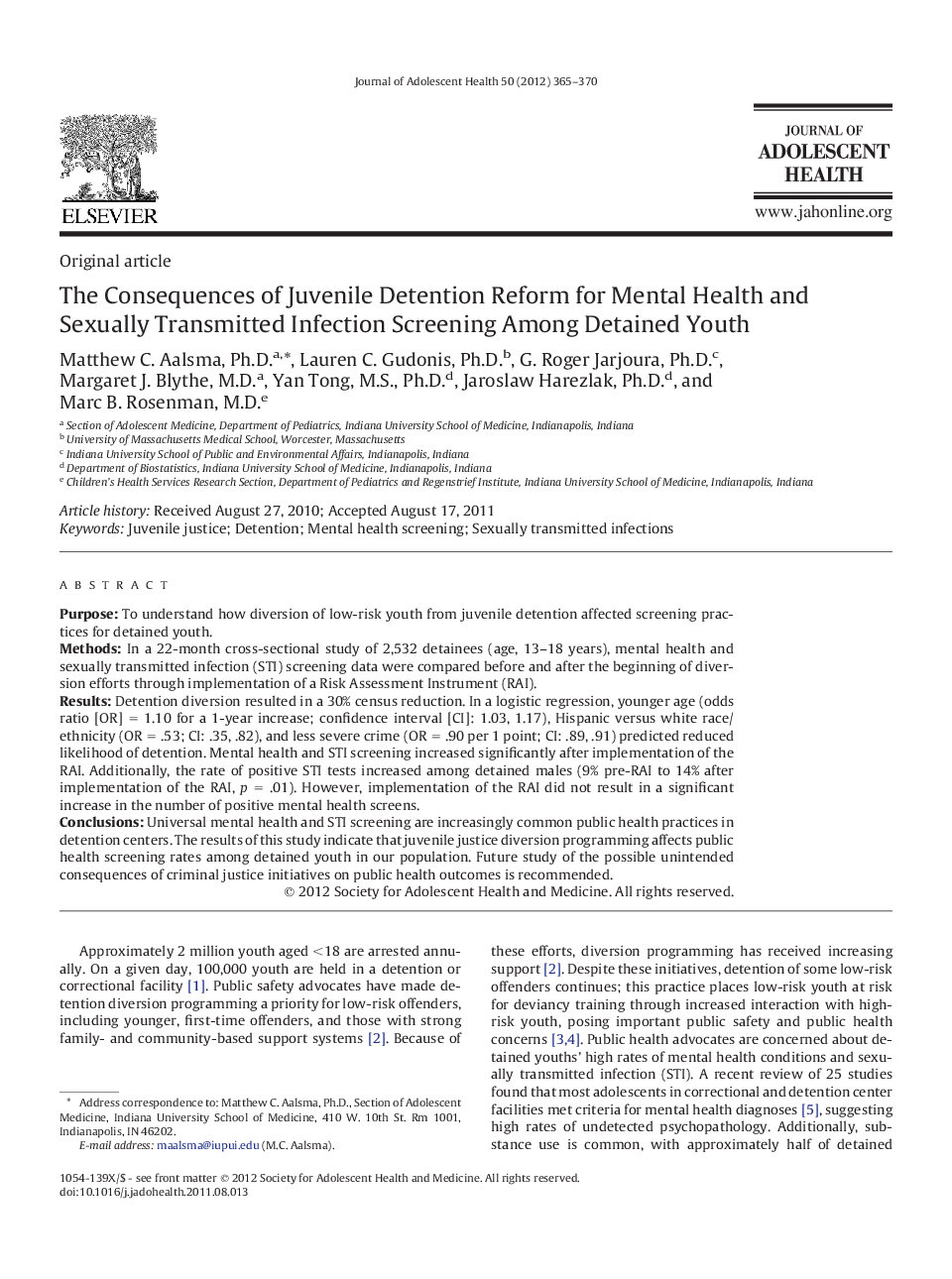| Article ID | Journal | Published Year | Pages | File Type |
|---|---|---|---|---|
| 1078712 | Journal of Adolescent Health | 2012 | 6 Pages |
PurposeTo understand how diversion of low-risk youth from juvenile detention affected screening practices for detained youth.MethodsIn a 22-month cross-sectional study of 2,532 detainees (age, 13–18 years), mental health and sexually transmitted infection (STI) screening data were compared before and after the beginning of diversion efforts through implementation of a Risk Assessment Instrument (RAI).ResultsDetention diversion resulted in a 30% census reduction. In a logistic regression, younger age (odds ratio [OR] = 1.10 for a 1-year increase; confidence interval [CI]: 1.03, 1.17), Hispanic versus white race/ethnicity (OR = .53; CI: .35, .82), and less severe crime (OR = .90 per 1 point; CI: .89, .91) predicted reduced likelihood of detention. Mental health and STI screening increased significantly after implementation of the RAI. Additionally, the rate of positive STI tests increased among detained males (9% pre-RAI to 14% after implementation of the RAI, p = .01). However, implementation of the RAI did not result in a significant increase in the number of positive mental health screens.ConclusionsUniversal mental health and STI screening are increasingly common public health practices in detention centers. The results of this study indicate that juvenile justice diversion programming affects public health screening rates among detained youth in our population. Future study of the possible unintended consequences of criminal justice initiatives on public health outcomes is recommended.
